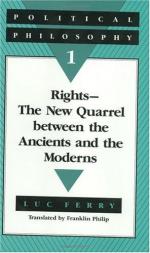|
This section contains 6,667 words (approx. 23 pages at 300 words per page) |

|
SOURCE: “Dialogue and Speakers in Parallèle des Anciens et des Modernes,” in Modern Language Review, Vol. 78, No. 4, October 1983, pp. 793-803.
In the following essay, Howells analyzes the significance of Charles Perrault's construction of the Parallèle des Anciens et des Modernes, as a dialogue between the Président, the Abbé, and the Chevalier.
Charles Perrault's Parallèle (1688-97), the great manifesto of the Moderns in the ‘Querelle’, is usually regarded simply as a set of arguments.1 The fact that it consists of dialogues between imaginary speakers is given little attention. My concern will be to look at the Parallèle as a didactic fiction.2 Perrault's choice of the dialogue form has numerous implications. We may ask why he uses an Abbé, a Chevalier, and a Presiding Judge as his interlocutors; what positions and functions he attributes to each; and how their interaction contributes to the total effect...
|
This section contains 6,667 words (approx. 23 pages at 300 words per page) |

|


